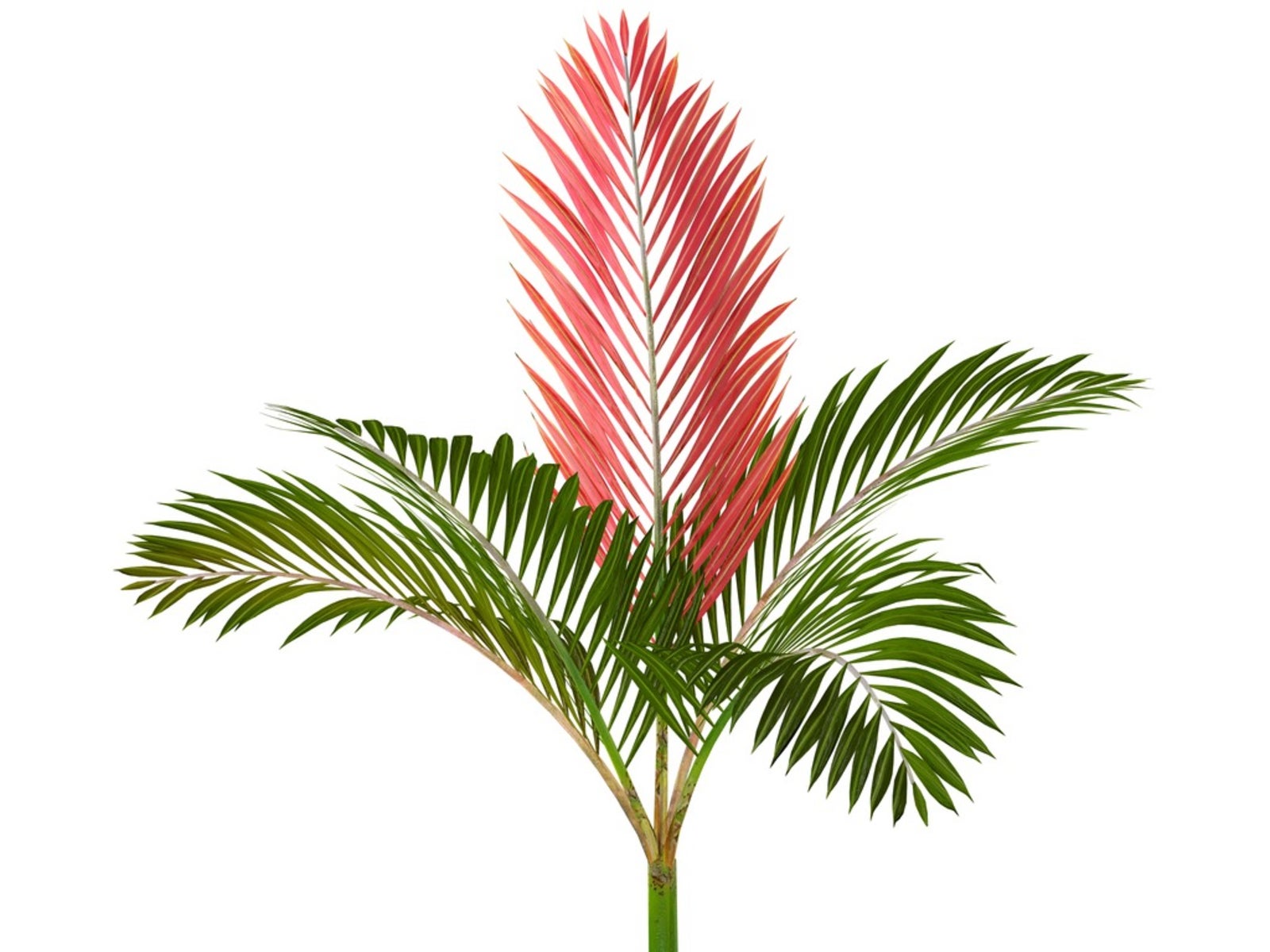Red Leaf Palm Information – Learn About Growing Flame Thrower Palms


Images of palm trees are often used as symbols of relaxing beach life but that doesn’t mean the actual tree species can’t surprise you. Flame thrower palms (Chambeyronia macrocarpa) are exotic and beautiful trees with new leaves that grow in scarlet. Red leaf palm information tells us these trees are easy to grow in warm climates, cold hardy to below freezing, and considered a “must have palm” by many homeowners. If you’re thinking of growing these trees read on for information including tips on red leaf palm care.
Red Leaf Palm Information
Chambeyronia macrocarpa is a feathery palm tree that is native to New Caledonia, an island near Australia and New Zealand. These extremely attractive and ornamental trees grow to 25 feet (8 m.) tall with leathery leaves some 12 feet (5 m.) long.
The claim to fame of this exotic palm is its eccentric coloration. The new leaves on many specimens grows in vivid red, remaining red for up to ten days or longer as the trees get older. Their mature leaves are deep green and arch dramatically.
Crown Shafts of Flame Thrower Palms
Another ornamental feature of these palms is the swollen crown shaft sitting above the ringed trunks. Most crown shafts are green, some are yellow, and some (said to have the “watermelon form”) are streaked with yellow and green.
If you wish to grow these palm trees for the red leaves, select one with a yellow crown shaft. From red leaf palm information, we know this type has the highest percentage of new leaves that are red.
Red Leaf Palm Care
You don’t have to live in the tropics to start growing red leaf palms, but you do have to live in a mild to warm region. Flame thrower palms thrive outdoors in USDA plant hardiness zones 9 through 12. You can also grow them indoors as large container trees.
The trees are surprisingly cold hardy, tolerating temperatures down to 25 degrees F. (-4 C.). However, they won’t be happy in hot dry conditions and prefer warm coastal areas like Southern California to the arid Southwest. You can do well growing red leaf palm trees in full sun on the coast but opt for more shade the farther you are inland.
Sign up for the Gardening Know How newsletter today and receive a free copy of our e-book "How to Grow Delicious Tomatoes".
Appropriate soil is an important part of red leaf palm care. These palms need rich, well-draining soil. In full sun the palms need irrigation every few days, less if planted in shade. You won’t have many pests to deal with when you are growing red leaf palm trees. Any scale bugs or whiteflies will be kept in check by predator bugs.

Teo Spengler is a master gardener and a docent at the San Francisco Botanical Garden, where she hosts public tours. She has studied horticulture and written about nature, trees, plants, and gardening for more than two decades, following a career as an attorney and legal writer. Her extended family includes some 30 houseplants and hundreds of outdoor plants, including 250 trees, which are her main passion. Spengler currently splits her life between San Francisco and the French Basque Country, though she was raised in Alaska, giving her experience of gardening in a range of climates.